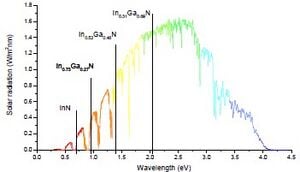
The unrestrained combustion of fossil fuels has resulted in vast pollution at the local scale throughout the world, while contributing to global warming at a rate that seriously threatens the stability of many of the world's ecosystems. Solar photovoltaic (PV) technology is a clean, sustainable and renewable energy conversion technology that can help meet the energy demands of the world’s growing population. Although PV technology is mature with commercial modules obtaining over 20% conversion efficiency there remains considerable opportunities to improve performance. The nearly global access to the solar resource coupled to nanotechnology innovation-driven decreases in the costs of PV, provides a path for a renewable energy source to significantly reduce the adverse anthropogenic impacts of energy use by replacing fossil fuels. This study explores several approaches to improving PV efficiency with nanotechnology: optical enhancement, microstructural optimization for electronic material quality and increasing the spectral response via bandgap engineering . Recent progress in these approaches is summarized with examples using 3rd generation PV materials and thin film PV devices. The results and impediments to widespread deployment and commercialization are discussed including technical viability, intellectual property laws and licensing, material resource scarcities, and economics. Future work is outlined and conclusions are drawn to overcome these limitations and improve PV device performance using methods that can scale to the necessary terawatt level.

